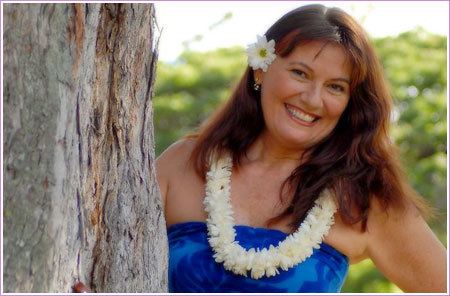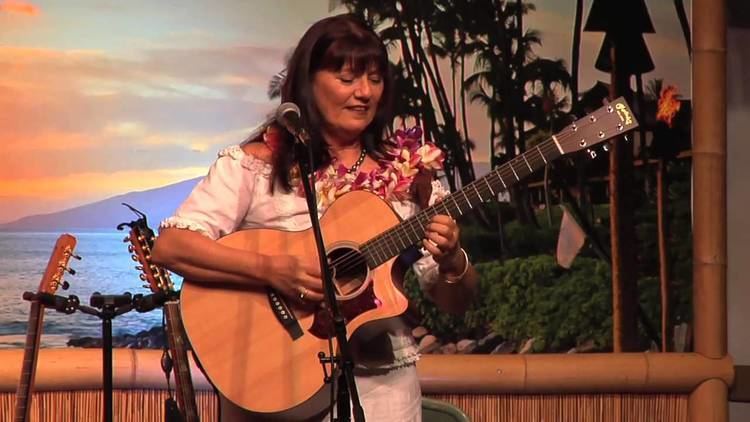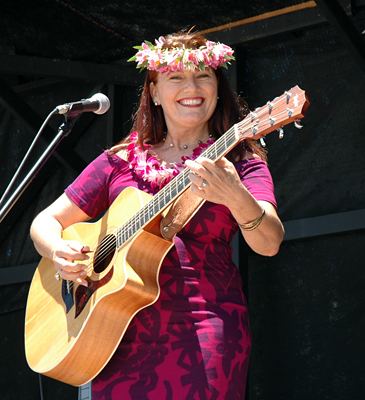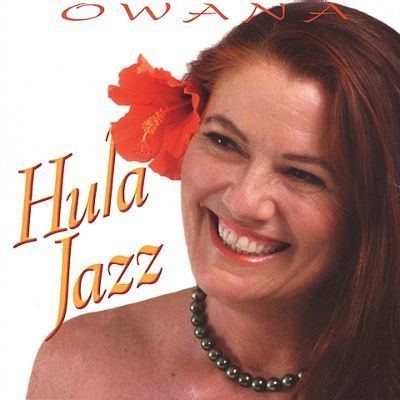Occupation Musician | Name Owana Salazar | |
 | ||
Spouse(s) Ronald Kaʻimihale WaltersWarren Kaipohoʻohuaamaua DeGuair Parents Helena Kalokuokamaile Wilcox Children Mahana Kaʻahumanu Walters, Noa Kalokuokamaile Grandparents Robert Kalanikupuapaikalaninui Wilcox Similar People Kamehameha I, Kalakaua, Quentin Kawananakoa | ||
Hi ilawe waterfall owana salazar
Owana Kaʻōhelelani Mahaelani-rose Salazar (born October 30, 1953) is a musician and activist who is descended from Robert William Wilcox and Theresa Laanui. She has been involved in Hawaiian sovereignty issues, as head of the Royal House.
Contents
- Hi ilawe waterfall owana salazar
- Hula jazz owana salazar
- Birth family and early life
- Music career
- Discography partial
- Cultural and Sovereignty Involvement
- References

Hula jazz owana salazar
Birth, family and early life

Owana Salazar was born in 1953. Her parents were Helena Kalokuokamaile Wilcox and Henry Mario Salazar. Owana is descended from the aliʻi line of Laʻanui, grandson of Kalokuokamaile, who was the first born son of Keōua Kalanikupuapaʻīkalaninui Ahilapalapa. Keōua's second son was Kamehameha I.

She was raised on the island of Oahu. Her early years were immersed in music and family history as taught to her by her mother. The only girl in a family of five. "Our family discussions were vast... about many of our ancestors, about their roles in Hawaiiʻs history, about the crown lands, about Robert Wilcox, about Princess Theresa going to Washington, about Princess Elizabeth going to Washington to petition Congress to survey the crown lands".

Salazar is a graduate of Kamehameha Schools, were she sang with the Concert Glee Club, and the University of Hawaii, where she learned Kihoʻalu (slack key guitar). Salazar studied hula with the Kumu Hula, Ho`akalei Kamau`u, Ho`oulu Richards and Winona Beamer. In addition to studying traditional western music theory, studied voice with Elizabeth Cole, and studied piano, string methods, guitar, Javanese dance and gamelan as well as continuing to study hula.
Music career
At the start of her public career, Salazar performed with Hawaiian headliners such as Don Ho, Ohta-San, Ed Kenney and Charles K.L. Davis. She was introduced to the world of Kihoʻalu by friend Nelson Hiu. Combining music theory with her repertoire of Hawaiian songs and slack key, Salazar developed her playing skills with help from her professors and other fellow musicians such as George Kuo, Bla Pahinui, Cyril Pahinui, Dennis Kamakahi, George Kahumoku Jr. and Sonny Chillingworth. Other musical influences include Joni Mitchell, Johnny Mathis, Connie Francis, Stevie Wonder, Genoa Keawe, Gabby Pahinui, Lena Machado Marvin Gaye, Debussy, Ravel, Bach, Rachmaninov.
Her first recording in 1986, Owana and Kaʻipo, In Kona was nominated in the category of Most Promising Artist in the Na Hoku Hanohano Awards, a Hawaiian music industry salute. The following year, her second recording, Owana, was a final ballot nominee for Contemporary Hawaiian Album of the Year and Female Vocalist of the Year. Pupukea describes the characteristics of the ocean on the North Shore of O`ahu. Kula Morning takes you upcountry Maui, gazing from mountain to the sea. “Na Wai” is a playful poetic expression of love's experiences, full of Hawaiian kaona (hidden meanings). “Kalamaula” celebrates the early homesteading movement of the Hawaiian people. “Silhouette Hula” is a hapa haole piece, recalling the early jazz years of Hawaiian music.
For most of the 1980s, Salazar sang Hawaiian classics with the Royal Hawaiian Band and performed at venues in Waikiki and Japan. Jerry Byrd accepted Salazar as his student for formal study of Hawaiian steel guitar. Eventually, she received a full scholarship from the Hawaiian Steel Guitar Association. In 1992, she became Byrd's only female graduate and has been called Hawaii's preeminent female steel guitarist. Besides Hawaii, Salazar has also performed in Tahiti, New Zealand, Australia, and the Americas. In January 2000, she became the first woman to tour with the Hawaiian Slack Key Festival along with George Kahumoku, Jr., Keoki Kahumoku and Daniel Ho.
Discography (partial)
Cultural and Sovereignty Involvement
Salazar has been strongly influenced by her descent from Hawaiian royalty and from her great grandfather, Robert Kalanihiapo Wilcox, a military and political leader. At nineteen, she was initiated into the Daughters and Sons of Hawaiian Warriors, Mamakakaua, a lineage society of descendants of Hawaii's ruling chiefs. Throughout her musical career, Salazar has promoted Hawaiian history, culture and sovereignty. She served as family liaison to the Mayor’s Office of Culture and the Arts for two years, with the goal of planning, commissioning and unveiling a life-size bronze statue of her great-grandfather Wilcox. His statue was installed at Wilcox Park in downtown Honolulu, on the corner of King and Fort Street.
In July 1998, Salazar and her son withdrew from Ka Lahui. In press interviews around the centennial of the United States' annexation of Hawaii under the 1898 Newlands Resolution, she noted that it was only a joint resolution of the US Congress, not a treaty.
